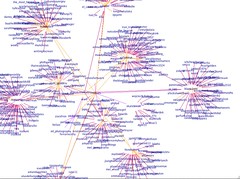
How do you scale an inbox that has multiple highly volatile feeds? That's a problem faced by social networks like Tumblr, Facebook, and Twitter. Follow a few hundred event sources and it's hard to scalably order an inbox so that you see a correct view as event sources continually publish new events.
This can be considered like a view materialization problem in a database. In a database a view is a virtual table defined by a query that can be accessed like a table. Materialization refers to when the data behind the view is created. If a view is a join on several tables and that join is performed when the view is accessed, then performance will be slow. If the view is precomputed access to the view will be fast, but more resources are used, especially considering that the view may never be accessed.
Your wall/inbox/stream is a view on all the people/things you follow. If you never look at your inbox then materializing the view in your inbox is a waste of resources, yet you'll be mad if displaying your inbox takes forever because all your event streams must be read, sorted, and filtered.
What's a smart way of handling the materialization problem? That's what is addressed in a very good paper on the subject, Feeding Frenzy: Selectively Materializing Users’ Event Feeds, from researchers at Yahoo!, who found:
The best policy is to decide whether to push or pull events on a per producer/consumer basis. This technique minimizes system cost both for workloads with a high query rate and those with a high event rate. It also exposes a knob, the push threshold, that we can tune to reduce latency in return for higher system cost.
I learned about this paper from Tumblr's Blake Matheny, in an interview with him for a forthcoming post. This is broadly how they handle the inbox problem at Tumblr. More details later.
Abstract from the paper:
Click to read more ...
 Thursday, May 10, 2012 at 9:15AM
Thursday, May 10, 2012 at 9:15AM 




















 Teams from
Teams from 

